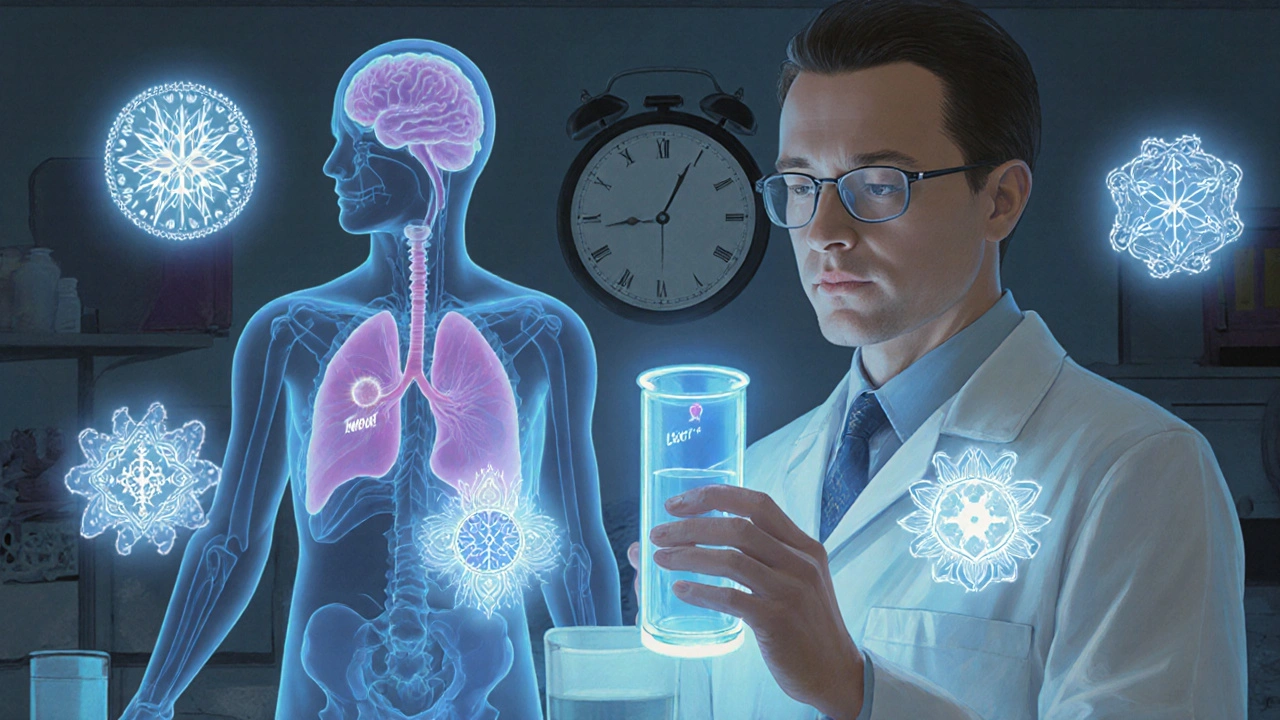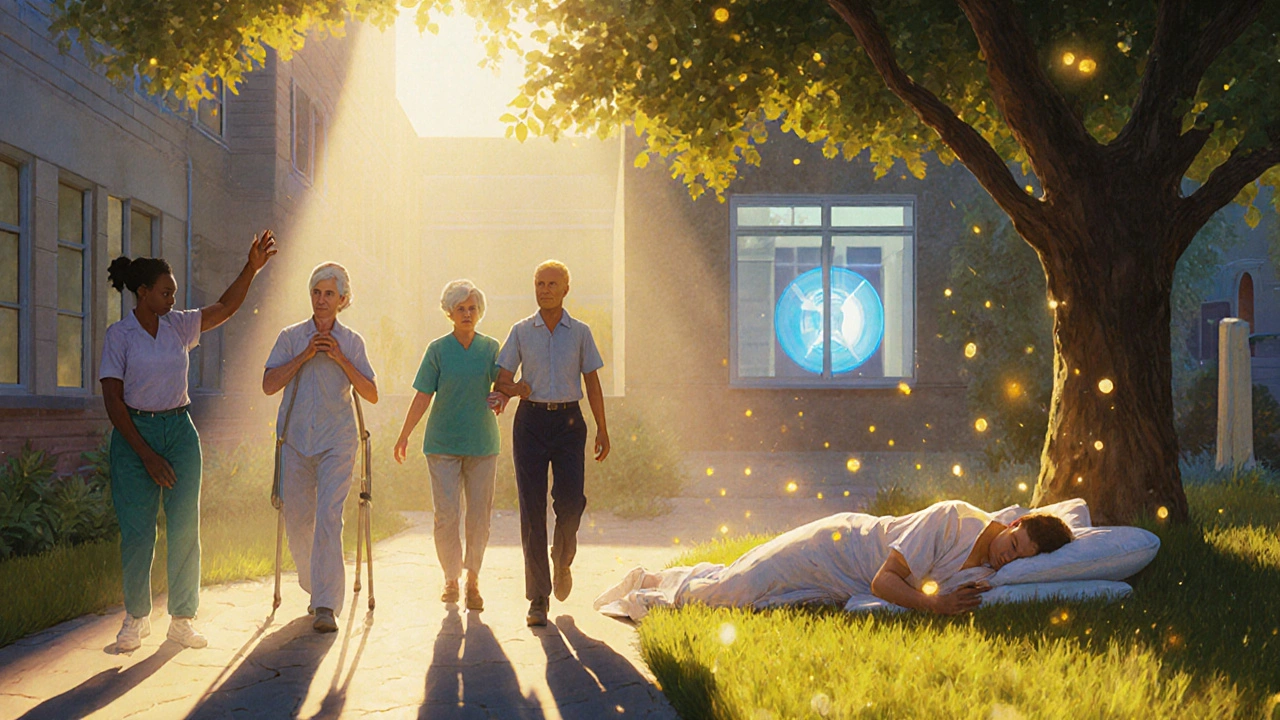Autoimmune encephalitis isn’t something most people have heard of-until it hits too close to home. It’s not a stroke. Not a virus. Not dementia. It’s when the body’s own immune system turns on the brain, attacking neurons and scrambling everything from memory to movement. Symptoms can start with a headache or a strange mood swing, then spiral into seizures, confusion, or even catatonia. The scary part? It’s treatable-if you catch it early. But every day you wait, the chance of full recovery drops. This isn’t theoretical. It’s happening right now, to people in their 20s and 60s, often misdiagnosed as psychiatric illness or viral encephalitis.
What Are the Real Red Flags?
The biggest mistake doctors make is assuming a sudden change in behavior means schizophrenia or bipolar disorder. Autoimmune encephalitis doesn’t look like classic mental illness. It looks like someone who was fine last week is now terrified of water, can’t remember their own name, or has uncontrollable jerking in their arms and face. These aren’t just odd behaviors-they’re neurological alarms. Look for these signs, especially if they appear together and worsen over days or weeks:- Seizures that don’t respond to standard epilepsy meds
- Memory loss so severe it interferes with daily life
- Psychiatric symptoms like paranoia, hallucinations, or aggression without prior history
- Unexplained changes in heart rate, blood pressure, or body temperature
- Profound insomnia or sleeping 20 hours a day
- Facial twitching or arm spasms that happen repeatedly in the same pattern
Which Antibodies Are Actually Involved?
Not all autoimmune encephalitis is the same. There are over 20 different antibodies that can trigger it, and each one tells a different story about who’s affected, what symptoms they get, and what’s hiding underneath. Anti-NMDAR is the most common-about 4 in 10 cases. It’s often seen in young women, sometimes linked to ovarian teratomas. These patients might start with flu-like symptoms, then crash into psychosis, seizures, and unresponsiveness. The good news? If you remove the tumor and start steroids fast, many recover nearly completely. Anti-LGI1 hits older men more often. Their signature sign? Faciobrachial dystonic seizures-tiny, rapid jerks in the face and arm that happen dozens of times a day. They also often have low sodium levels (hyponatremia), which can make them confused or lethargic. This type has a high recurrence rate-over one-third of patients will have another episode without long-term treatment. Anti-GABABR is rarer but more dangerous. Half the people with this antibody have small cell lung cancer. The immune attack on the brain happens because the tumor looks like brain tissue. If you don’t find and treat the cancer, the encephalitis will keep coming back. Then there are the intracellular antibodies-like anti-Hu or anti-Ma2. These are trickier. They’re often tied to hidden cancers, but the damage they cause is harder to reverse. Even with treatment, recovery is less likely. That’s why testing for all possible antibodies matters. A negative blood test doesn’t rule it out. Sometimes you need spinal fluid to catch it.How Is It Diagnosed?
There’s no single test. Diagnosis relies on putting together pieces: symptoms, imaging, lab work, and ruling out everything else. First, an MRI. In infectious encephalitis, you usually see big, obvious swelling. In autoimmune encephalitis, the brain might look normal-or show just a faint glow in the hippocampus (the memory center). That’s enough to raise suspicion. Next, the spinal tap. Cerebrospinal fluid (CSF) is the key. In autoimmune cases, white blood cells are mildly elevated-maybe 10 to 50 per microliter. In viral infections, you’ll see hundreds or thousands. CSF protein is only slightly high in autoimmune, not massively elevated. And here’s the clincher: oligoclonal bands are usually absent. That’s a big clue it’s not an infection. EEG is another piece. Over 75% of patients show slow brain waves, often in the temporal lobes. But they don’t show the telltale spikes of herpes encephalitis. That’s how you tell them apart. Antibody testing must include both blood and CSF. For anti-NMDAR, CSF is 15-20% more sensitive. A negative blood test doesn’t mean it’s not there. And results can take weeks. That’s why doctors are told: if the clinical picture fits, start treatment now. Don’t wait.
What Are the Treatment Steps?
Treatment isn’t one-size-fits-all. It’s tiered-like an emergency ladder. First-line is fast and aggressive: high-dose steroids (methylprednisolone, 1 gram a day for five days) and IV immunoglobulin (IVIg, 0.4 grams per kg per day for five days). About two-thirds of patients respond within a week. If they don’t, you move up. Second-line kicks in if there’s no improvement after 10 days. Rituximab (a B-cell destroyer) or cyclophosphamide (a stronger immune suppressant) are the go-tos. Tocilizumab, originally for arthritis, is now showing promise in resistant cases. Plasma exchange-filtering the blood to remove bad antibodies-is used for critically ill patients. It works fast: 65% improve within two weeks. But here’s the most critical step: find the tumor. In 30% of cases, there’s an underlying cancer. For anti-NMDAR, that’s often an ovarian teratoma. For anti-GABABR, it’s lung cancer. Surgery isn’t optional-it’s the most effective treatment. One study showed 85% of patients improved within four weeks after tumor removal. And screening doesn’t stop after one scan. Tumors can be tiny. Repeat imaging every 4-6 months for two years.What Happens After Treatment?
Recovery isn’t linear. Some people bounce back in weeks. Others need months of rehab. About 55% of people with anti-LGI1 recover fully within two years. For anti-NMDAR, it’s 45%. But even those who seem to recover often have lingering issues: trouble remembering names, difficulty focusing, depression, anxiety. Up to 40% of survivors need ongoing support. Cognitive rehab helps. Twelve weeks of structured memory training improves function in 65% of patients. Physical therapy helps with movement problems-50% improvement in motor skills within eight weeks. For sleep issues, melatonin (3-5 mg at night) works for 60%. For heart rate spikes, beta-blockers help 75% of patients. And recurrence? It’s real. Anti-NMDAR comes back in 12-25% of cases. Anti-LGI1? Up to 35%. That’s why long-term follow-up with a neurologist every 3-6 months for the first two years is non-negotiable.
Why Timing Is Everything
The window for recovery is narrow. If treatment starts within 14 days of symptoms, the chance of full recovery jumps by 32%. If you wait beyond 45 days, recovery rates drop to 42%. That’s not a small difference-it’s life-changing. Dr. Josep Dalmau, who discovered anti-NMDAR encephalitis, says it plainly: “Every day counts.” Delaying treatment because you’re waiting for test results? That’s the mistake that costs people their independence. The latest research confirms it: starting steroids and IVIg before antibody results are back doesn’t hurt-it saves. That’s why hospitals are changing protocols. If the clinical signs are clear, don’t wait. Treat. Then confirm.What’s Next in Research?
The field is moving fast. Scientists are now tracking a protein called GFAP in the blood-it rises when the brain is inflamed and drops when treatment works. It could become a real-time monitor for disease activity. New drugs are in trials: B-cell depleting agents and complement inhibitors that target the immune attack more precisely. Early results show 60% response in patients who didn’t respond to anything else. And there’s hope in personalized medicine. A 2025 prediction model uses clinical data-level of consciousness, EEG patterns, memory scores-to estimate risk. Patients who got treatment tailored to their risk level had 28% better outcomes than those on standard protocols. This isn’t science fiction. It’s happening now.Can autoimmune encephalitis be mistaken for a psychiatric disorder?
Yes, frequently. Early symptoms like paranoia, hallucinations, aggression, or sudden personality changes often lead to misdiagnosis as schizophrenia, bipolar disorder, or severe depression. But unlike psychiatric illnesses, autoimmune encephalitis progresses rapidly over days or weeks, includes physical symptoms like seizures or abnormal movements, and doesn’t respond to antipsychotics. A brain MRI, spinal fluid test, and antibody screening are needed to rule it out.
Is autoimmune encephalitis contagious?
No. It’s not caused by a virus, bacteria, or fungus. It’s an autoimmune condition-your immune system attacks your own brain tissue. You can’t catch it from someone else. However, some cases are triggered by infections (like a cold or flu), which may start the immune response, but the disease itself is not infectious.
How long does recovery take?
Recovery varies widely. Some people improve within weeks, especially if treated early. Others take months or even over a year. Full recovery is possible, but many patients have lingering issues like memory problems, fatigue, or anxiety. Cognitive rehabilitation and physical therapy can significantly improve outcomes, with studies showing up to 65% improvement in memory after 12 weeks of therapy.
Do all patients need cancer screening?
Not all, but it’s critical for certain antibody types. For anti-NMDAR, especially in young women, ovarian teratoma screening (pelvic ultrasound or MRI) is mandatory. For anti-GABABR, lung cancer screening is essential. Even if initial scans are negative, repeat screening every 4-6 months for two years is recommended because tumors can be small or hidden at first.
Can autoimmune encephalitis come back?
Yes. Recurrence rates vary by antibody type. Anti-NMDAR returns in 12-25% of cases, usually within the first year. Anti-LGI1 has a higher recurrence rate-up to 35%. Long-term immunotherapy, regular follow-ups, and monitoring for symptoms are key to preventing relapse. If symptoms return, treatment must be restarted immediately.
If you or someone you know has sudden neurological or psychiatric changes-especially with seizures, memory loss, or autonomic symptoms-don’t delay. Ask for autoimmune encephalitis to be ruled out. Early action doesn’t just improve outcomes. It can change a life.

